The term “transport logistics” was introduced at the first European Congress in this field of activity, held in Berlin in 1974. Here the definition of this concept was also given. According to documents adopted at the Congress, transport logistics is a science that carries out planning, management, as well as control over the movement of information, financial and material resources, which are links in various systems.
Relevance of the topic
The existing problems of transport logistics require a solution due to the constant need for the existence of channels for the supply of raw materials and semi-finished products, as well as the distribution of manufactured products.
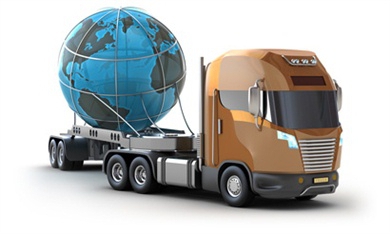
The most important question in this case is the decision to determine the path of movement of goods. This is the most acute problem that we have to deal with when delivering products to sales market. The relevance of this issue is confirmed by the fact that almost half of all costs incurred for logistics account for transport costs.
Prevalence
Transport logistics is not limited to one state. Today it has crossed the borders of many countries. So, in Europe, within the EEC, transcontinental transport logistics systems have been created and are operating. There are similar developments and international type. An example of this is the logistics system of the united European space.
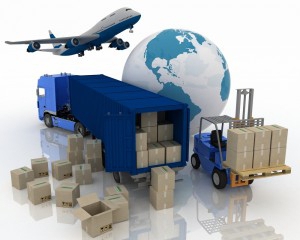
Moreover, in the transport policy of the EEC countries, this type of communication is a structural and technological part of the economy of not only each individual state. It applies to the entire community as a whole. This is due to the fact that transport logistics is high-quality and efficiently satisfies existing transportation needs. At the same time, she puts the task of delivering on time exactly agreed upon.
The basic concept and essence of logistics
This term has many diverse interpretations. In a number of definitions of logistics, its operational and financial aspect takes place. Moreover, it is believed that this science is connected with the activity in the economic turnover that occurs from the moment the required amount is paid to the supplier under the supply contract until the time when the consumer pays the bills for the transportation of goods to him.
Of course, the definition of logistics given above is quite fair. However, it does not take into account one of the most important aspects of this discipline regarding its ability to influence the company's strategy and its ultimate goals related to market influence.
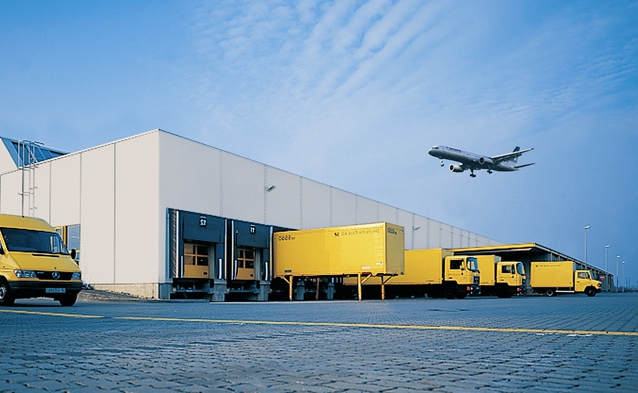
This essence of transport logistics is reflected in definitions that indicate the managerial and economic aspect of the term.
Distinguish:
- procurement logistics related to the provision of production processes with various resources;
- production logistics;
- sales or marketing;
- transport, which is an integral part of each of the above types.
The basics of transport logistics are considered taking into account the existing information flow which includes the collection of data about the product, its processing and transmission. However, the data obtained are not the ultimate goal of this discipline. They require processing, as a result of which ready-made information is issued. Thus, in logistics there is a certain subsystem called computer. It is the basis of all further developments.Transport logistics management is carried out in the form of choosing the best solution from all available.
The main function of determining the patterns of movement of goods is the delivery of products using automobile, railway or other means using a certain technology. These deliveries include forwarding and cargo handling, packaging and insurance of risks, transfer of rights to cargo and customs procedures, etc.
All transport enterprises operating in a developing market economy should be set up to receive a significant economic result within the framework of the logistics chain. To solve this problem, there are various factors, such as:
- increased competition between various types of rolling stock and enterprises;
- an established market in which transport services are provided;
- increasing demand for quality and tariffs from consumers, etc.
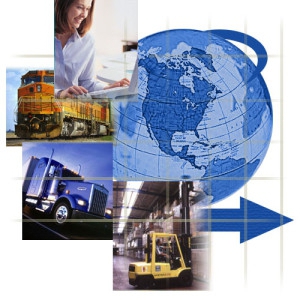
The whole process of transport logistics includes many links. It begins with suppliers of materials and raw materials, covers various intermediaries and ends with consumers of transported goods. In this case, a single technological chain arises in which transport is part of a single economic process.
Moving goods
Changing the location of finished products, as well as raw materials, should take into account the principle of profitability, which implies a reduction in time and cost. Moving goods should be financially profitable, as it takes time and money.
Transport logistics should be based on the concepts of reducing stocks both in warehouses and on the road, because they “bind capital”, limiting the use of commodity and material resources. In this case, the significance of the time factor significantly increases.
Transportation of goods is impossible without financial resources. They find expression in the domestic costs of transporting their own rolling stock. Investment of financial resources is also carried out on the rental of public or commercial vehicles. In this case, we are talking about external costs.
Thus, the movement of goods is the transportation function that defines the main goal of the whole process. Moreover, the delivery of goods to their destination should occur as quickly as possible, with less financial cost and with minimal damage to the environment.
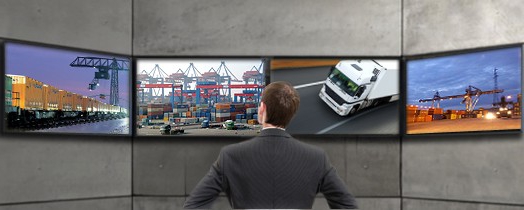
When developing a logistics scheme, it is also necessary to minimize damage and loss of goods. At the same time, customers ’requirements for timely delivery and the provision of information on the location of the goods along the way should be met.
Cargo storage
This is one of the transportation functions necessary to save money on reloading and unloading. Also, its use is necessary in case of insufficient storage space or changes in previously developed routes. However, it should be borne in mind that this procedure increases the time spent on the cargo. Of course, using vehicles to store goods is not cheap. However, this technique is sometimes quite justified in terms of total costs.
Variety of rolling stock
A significant part of the movement of material flows from the primary location of raw materials to the final consumer of the resource is carried out with the participation of a variety of vehicles. The costs of these operations are within fifty percent of all logistics costs. The following transport groups are distinguished:
- Common use. This transport serves the population and the sphere of circulation, entering the branch of the national economy that is called upon to satisfy the needs of all the economic spheres available in the state.Public transport is considered to be water, rail, pipeline and automobile rolling stock.
- General use. This is a group that includes intra-production transport, as well as the rolling stock, which is the property of non-transport enterprises. Such non-public facilities are part of production systems and should be organically integrated into them. Therefore, the tasks of transport logistics at the enterprise include the organization of the work of such rolling stock. In this case, the developed scheme should be “tied” to the solution of production issues related to procurement and distribution.
Tasks solved by transport logistics
When developing a scheme for the delivery of goods, it is necessary to take into account many factors. What is included in the main tasks of transport logistics? The development of a cargo movement scheme is carried out with
- the choice of a particular type of vehicle;
- joint planning of cargo delivery with the production and warehouse process;
- determining the most rational delivery routes;
- ensuring the unity of the transport and storage process;
- joint planning of transportation on various types of rolling stock.

Sometimes in transport logistics it is necessary to solve specific problems. They arise in cases where the volume of work on the transportation of goods is allocated in an independent array. This occurs when the functioning of public transport, and sometimes non-general purpose. In this case, transportation is allocated into one large and independent sphere.
These specific tasks include:
- creation of transport chains and corridors that are part of a single system;
- planning joint processes in multimodal transport;
- compliance with the unity of transport and storage processes;
- the choice of the most appropriate vehicle;
- determination of the most rational routes.
The basic principle of logistics
When developing freight routes, a combination of technical, economic and technological areas of activity of economic entities occurs. Knowing the basics of transport logistics, you can solve complex problems and achieve complex goals. At the same time, there is a guarantee of the continuity of technological and economic processes. At the same time, the logistics system adheres to its main principle, which is to minimize transportation costs.
The most effective way to achieve financial savings is to increase the range and volume of cargo transportation. The reduction in cash costs due to the first factor occurs due to the fact that on large routes the unit of distance is somewhat cheaper in terms of the use of rolling stock. And all this should take into account transport logistics. An example of this approach can be given quite simple. So, the delivery of one batch of goods per 2000 km will cost much cheaper than the freight of two lots per 1000 km. As for the volume of goods, its large values reduce the cost of transporting a unit. Moreover, for this, more powerful vehicles (rail or water) will be needed. Their use is cheaper than air or automobile.
Choice of transport
The search for a suitable rolling stock cannot but take into account the principle of the logistics system described above. Transportation of goods should be as close as possible to each of them, but do not forget at the same time about the preferences of the customer.
Rolling stock costs should be calculated so that they are optimal. This will reduce the total cost of the logistics system. This state of affairs can be achieved by establishing an equality between the quality of cargo transportation and the costs of the used rolling stock.
The choice of vehicle should be based on its compliance with certain criteria.At the same time, it is necessary to rent such a rolling stock, which would have a set of certain properties. There are many criteria for choosing a vehicle. However, the most popular of them are:
- capacity;
- carrying capacity;
- the possibility of product safety;
- saving financial investments in transportation.
At the same time, when compiling logistics schemes, other tasks must be solved. Their list includes the creation, as well as maintaining the necessary level of stocks, the choice of packaging material, etc.
Organization of transport logistics begins with the selection of information about the characteristic features of a particular rolling stock. So, the main advantage of road transport is its high maneuverability. The use of this means of transportation allows the delivery of goods with the highest possible degree of accuracy and “from door to door”. Using this type of transport, regular deliveries are ensured, and less stringent requirements arise for the quality of product packaging. The disadvantages of road transport include their high cost, urgency of unloading, the likelihood of theft of cargo, low payload and the risk of theft.
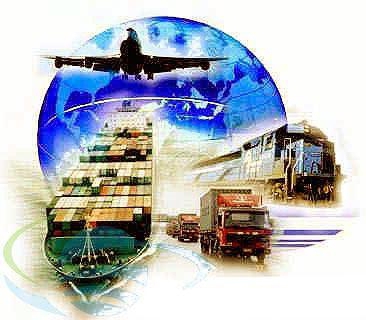
With the help of rail transport, goods can be transported in various batches in any weather conditions. This rolling stock for the logistics scheme is selected in the case when the cargo needs to be delivered regularly and over long distances. Moreover, rail transport is characterized by a relatively low cost and the ability to effectively organize loading and unloading operations.
What rolling stock does logistics prefer to choose for international transport? The most suitable for them is sea transport. It has low freight rates and a fairly high carrying capacity. The disadvantages of maritime transport include its very low speed, irregular shipments, as well as stringent requirements for packaging and securing of goods.
When developing a logistics scheme, aircraft can also be used. They will allow you to deliver cargo with high speed to the most remote areas. However, the cost of such transportation is quite high and depends on the prevailing weather conditions.
Often, of all modes of transport, logistics chooses inland waterway. This is the cheapest rolling stock used to transport goods. However, the choice for water transport drops only when a high speed of delivery of goods is not required, and the consumer’s warehouse is located near existing waterways.
The main tasks in the manufacturing sector
Transport logistics at the enterprise solves a number of problems associated with its smooth operation. At the same time, work is underway on tasks that include:
- Development of transport networks and corridors. The first type of routes is connected with the transportation of goods between different settlements of the same region or regions on a national scale. Transport corridors are transport networks grouped in a specific way.
- Choosing a warehouse. This is no less important task. Transport and warehouse logistics determines the points where it will be possible to place the cargo along the developed route of its movement. For example, it can be delivery to the warehouse of the enterprise after customs operations.
- The choice of type of rolling stock. The solution to this problem is impossible without interrelation with factors such as stock levels, choice of packaging, etc. The optimal vehicle for a particular transportation is selected based on an analysis of the characteristics of the existing rolling stock. When developing a logistics scheme, transportation costs should be minimized. This factor has a significant impact on the choice of subcontractors with whom cooperation is ensured at each stage of transportation.
- Determination of optimal delivery routes. Ways of transportation are determined by the logistics of the company, taking into account the solution of all the above problems. In this case, safety and speed conditions must be met.
Further development
It is no exaggeration to say that logistics serves as an excellent prerequisite for the economic growth of all countries on our planet. In Europe and the USA, the costs of developing transport schemes are between 7.8% and 8.6% of GDP, respectively.
The market for logistics services in the West was formed in the 90s of the last century. At the same time, experts note its annual growth of 16-22%. The largest development of transport logistics is recorded in the United States. So, in 2004, the capacity of this market amounted to 89.4 billion dollars. In this segment, the leadership belongs to freight forwarders organizing international cargo transportation.
Improving transport logistics in Russia is not taking place at such a rapid pace. Our country began to feel the need for this segment only during the transition to a market economy. However, the development of logistics services, as well as many other innovations, is affected by the political situation, the level of technological development and many other factors.
Today, despite numerous problems and difficulties, in Russia there are certain prerequisites that contribute to the development of logistics chains. One of them is scientific and technical, expressed in the begun training of qualified specialists. There are technical prerequisites for the development of logistics. These are technological objects of territorial, branch and departmental systems of supply and marketing of products.
These prerequisites lay the foundation for the creation and strengthening of the logistics core, which would facilitate the management of all areas of the economy and management as a whole.








